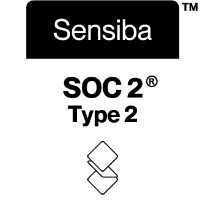
Shallow work
Many of the tasks that we spend attention on are mindless. Answering emails, making calls, communicating on IM, reading blog posts, doodling in meetings, watching videos, posting on social media.
Cal Newport calls these shallow tasks. Shallow because they require little focused effort and we switch between them quickly. We may feel productive when we’re performing them, but what have we actually produced once we’ve finished?
Our old nemesis multi-tasking plays a crucial role in allowing us to switch between these shallow tasks quickly. Unfortunately, the majority of us (98%) can’t effectively multitask. For most, multi-tasking is a case of performing two tasks poorly, at the same time. And if that doesn’t concern you, then this should: multi-tasking can cause us to lose IQ points - each day!
I am as much a victim of multi-tasking as the next person. I wasn’t always like this, though. I used to have much better focus throughout the day, on both personal and professional tasks. If I was having a conversation with someone I was 100% actively listening. If I was writing a scope of works, I’d have my instant messenger on Do Not Disturb, my email off and my headphones on. I could focus.
However over the last 6 months or so I have let these habits slide. And unsurprisingly, I’ve landed in an increasingly deep pit of multi-tasking and shallow work despair. I was“busy” in the sense that I was performing hundreds of shallow tasks a day, but I in no way felt like that busyness was producing quality output.
A wealth of information creates a poverty of attention. - Herbert Simon
Enter the Art of Focus
By chance, I recently signed up to a weekly newsletter from an awesome blog called Farnam Street. Its founder, Shane Parrish, describes it as a place to make better decisions, create new ideas, and avoid stupid errors. This description belies the insightful and useful writing that lies within. Perhaps this one is better:
The best newsletter on the internet.
Fandom aside, as I was reading through last week’s newsletter, I stumbled onto a course that Shane has produced, called the Art of Focus. Sold!
Below are two of Shane’s tips from the course that most resonated with me. The course is chock full of insights and actionable strategies. I highly recommend it.
Shallow vs deep work
Shallow work is the majority of what we do each day, at work. If you’ve ever felt like a pinball, bouncing (or lurching) between tasks one after another, that’s shallow work.
We want to minimise shallow work for it’s older, and far wiser sibling: deep work. Deep work is rarer than shallow work. Deep work is dedicating attention to one task, at the exclusion of all others. It’s getting into the flow. And it’s where we produce our best work.
How often do you find yourself performing 'deep work'? Image via the Art of Focus
In order to manage our attention effectively, we firstly need to identify when we’re producing shallow work. So that we can better manage our attention and divert more resources towards deep work. Shane gives some great tips on how to achieve this in the course.
Deliberate practice
This one really resonated with me, since deliberate practice is a critical skill for both learning and developing a growth mindset. Deliberate practice is focusing on a specific domain to improve performance. It requires:
- A specific domain or skill to focus on
- Immediate feedback (ideally from a coach or mentor)
- Rest (to consolidate memory and give our brains a break)
Deliberate practice can be used to practice focus. You could start by setting aside 30mins each day to focus on one specific skill or domain. I chose to focus the time I spend on the bus on reading real physical books (old-school!). Whereas I used to flick between reading blog posts, listening to podcasts and social media, now I’m 100% focused on one task. And I feel more content and relaxed as a result.
I feel that the benefits from this daily focus practice are spilling over into the rest of my life. I’m more aware of distractions during the work day, and more actively set boundaries to protect my attention.
In fact, this post was written in 1 hour of focused attention – a first for me.
Focus!
For more on multi-tasking check out:


































